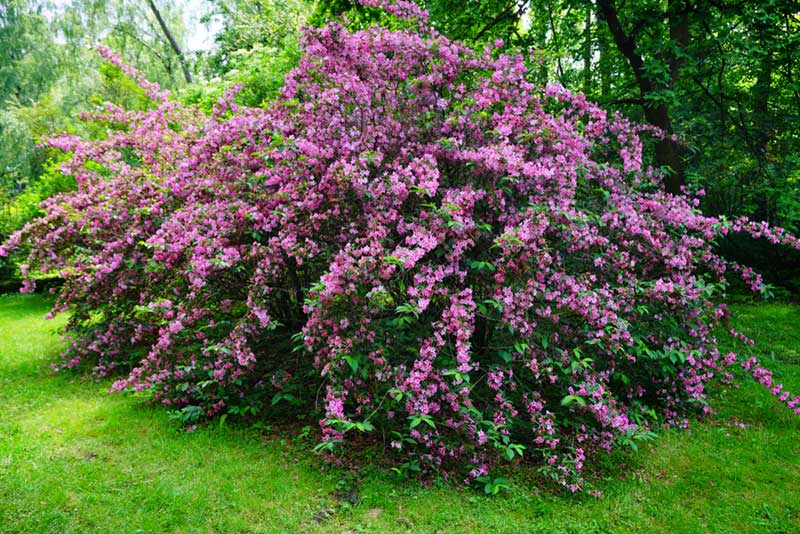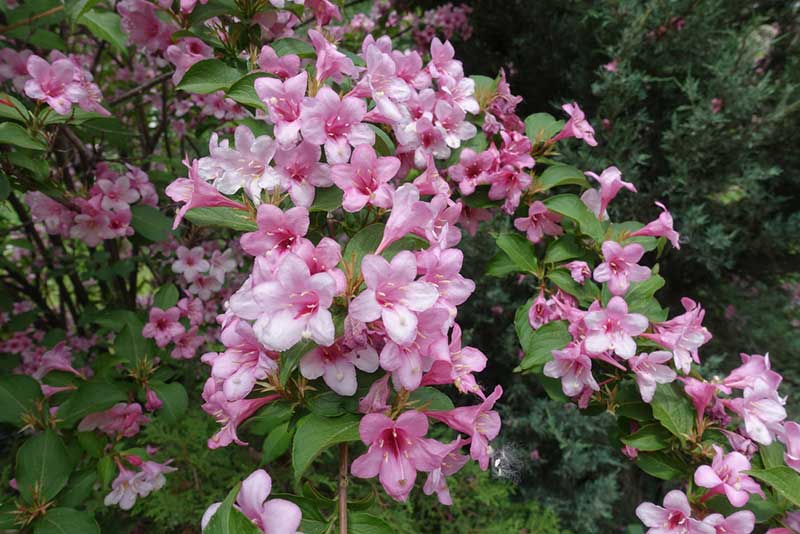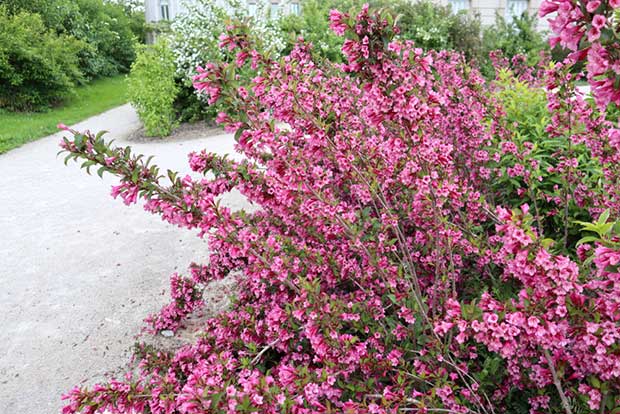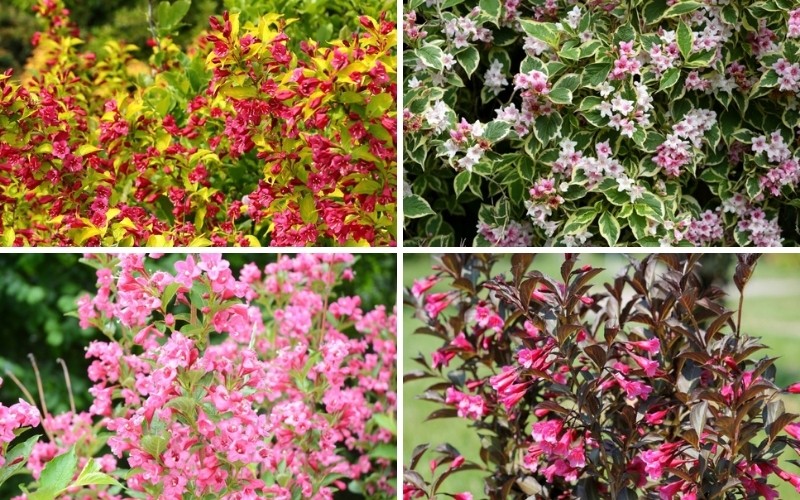
Weigela is an old-fashioned shrub that has earned its place in the perennial bed due to its bright show of color in the spring. However, in recent years, new varieties have been developed that bloom throughout the summer, as well as, produce ornamental foliage in several colors, including burgundy and variegated green and white.
These shrubs range in height from dwarf varieties of a foot or two to towering shrubs that reach heights of 10 feet with an equal spread. Most weigelas are hardy in USDA plant hardiness zones 4 through 8.
Light and Temperature Requirements
Weigela prefers full sun for at least 6 to 8 hours a day, but it will grow in partial shade. Flowering is most abundant with the richest colors when weigela is grown in full sun. However, in the hottest regions they benefit from some light shade during the brightest part of the day. This is particularly true of those with variegated foliage as the leaves burn easily in the hot afternoon sun.
Watering
Weigela has moderate watering needs and prefers 1 to 2 inches of rainfall a week. If your area does not receive at least an inch of rain a week, supplemental watering may be necessary. Water your weigela thoroughly to saturate the soil.
Newly planted weigela shrubs need evenly moist soil until they have established a strong root system. Water young weigela shrubs when the soil feels dry 1 inch below the surface.

Soil & Fertilizing
Weigela prefers well-drained soil high in organic matter. Amending the soil with compost or well-rotted manure before planting your weigela shrub is a great way to promote aeration and improve drainage.
Dig a hole twice the size of the root ball of your new weigela shrub. Add a 3 to 4 inch layer of compost or manure to the hole and mix it in with the existing soil. Position the new shrub in the hole with the crown (the area where the trunk meets the roots) at the soil level. backfill around the roots with soil and firm it down with your hands to secure the roots.
Fertilize your weigela shrubs with plant spikes or fertilizer designed for flowering shrubs in the spring just as new growth appears. Follow the application rate on the container for best results.
Deadheading and Pruning
Deadheading dead or faded blooms approves the appearance of your flowering weigela, but that’s not the only reason you should take the time to remove the spent blooms. Removing the dead and dying flowers sends a message to the plant that it has not produced enough flowers to set seed and reproduce. This causes the plant to produce even more new flowers. Regular deadheading can prolong the blooming period for your weigela.
Weigelas require relatively little pruning to keep them healthy and attractive. They will benefit from pruning away any dead wood as a result of dieback during a harsh winter.
They also benefit from removing old branches at the ground level if your weigela becomes overgrown.This helps to open up the center of the shrub and improve air circulation. It also forces new shoots to form at the base of the shrub which results in more blooms.
Prune weigela lightly to maintain the desired size and shape shortly after the shrub has stopped blooming.

Propagation
Weigela propagates easily from both softwood cuttings in late spring or early summer, or hardwood cuttings taken in the fall. Here’s how.
- Using sterilized clippers, cut a 4 to 6 inch section from the growing tip of the branches on your weigela shrub.
- Remove all but the top two leaves on the cutting.
- Scrape the bark from the bottom 1 to 2 inches of the cutting.
- Dip the cut end of the stem cutting in rooting hormone.
- Insert the bottom 2 inches of the cutting into a flat or container of moist potting medium consisting of equal parts perlite and soilless potting mix.
- Place the cuttings in shaded location.
- Keep the soil evenly moist until new roots form in about 7 to 10 days.
- Pot the new shrubs in individual containers when you see signs of new growth.
- Grow the new weigela shrubs in a shaded area for up to a year before moving them to their permanent location in the garden bed.
Weigelas make a striking statement with their splash of bright color in the spring, but that’s not all. Hummingbirds flock to the tubular flowers bringing your garden alive with both color and movement. Always consider the space you have available for growing and choose a weigela that matches the area. While you can tuck a dwarf variety in a container on the deck, some weigelas require a large space in the garden.





